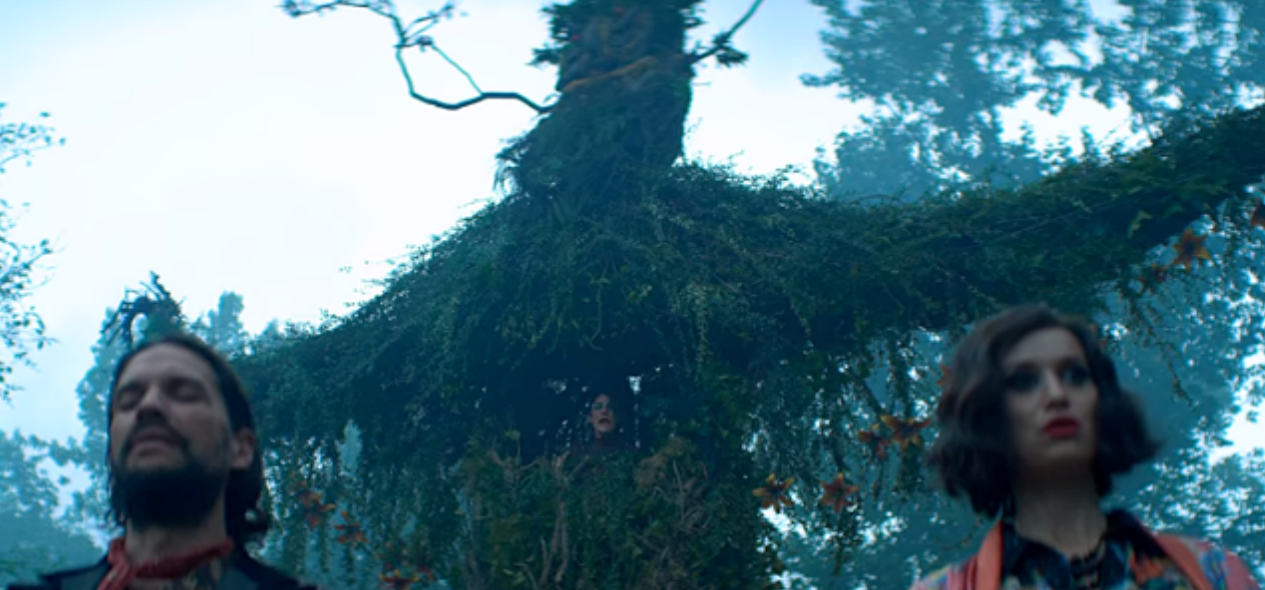The Green Man

| Basic Information | |
|---|---|
| Species | God |
| Status | Deceased |
| Cause of Death | Desiccated |
| Affiliation | Professor Carcosa's Traveling Carnival and Phantasmagoria |
| Mentioned | Part 3, Chapters 21-28; Part 4, Chapter 29 |
An ancient deity, the Green Man, was worshipped for centuries before Satanic witches came along. However, a traveling group of pagans under the leadership of Professor Carcosa (secretly the Satyr Pan) decided to attempt to bring him back.
Sowing the Spores
Professor Carcosa's Traveling Carnival and Phantasmagoria arrived in Greendale looking to dethrone the Dark Lord, and they had a rather unique way of going about it. In order to bring back an old god, the Green Man, they would have to sacrifice a virgin.
The local townspeople also needed to be ‘seeded’ first. This involved lacing the caramel apples at the carnival with spores inside. These had the potential to turn people into hosts. The next part of the plan would involve sacrifice, and the idea was that the Green Man would rise, covering the world with blooming plants to pollinate those caramel-apple-eating victims.
Alternate Timelines
In one version of the timeline, Harvey Kinkle was sacrificed to the Green Man. The pagans rose to power with the old god’s resurrection. That didn't come about when Sabrina Spellman altered the timeline, however. Instead, a hedge witch named Pesta used glamour to pose as Mary Wardwell and successfully desiccated the Green Man.
"From mountains where maddened winds did blow to the islands where zephyrs breathed sweet and low. We've risen to Heaven, plunged below for we wanted to make it one hell of a show!"
— Carcosa
The Green Man of Celtic Myth
While the Chilling Adventures of Sabrina’s version of the Green Man is rather chilling, Celtic mythology gives us a much different depiction of this ancient deity. He’s seen to represent the cycle of regrowth that takes place every spring. He is often depicted as a head covered in green leaves or a person with plants growing out of their mouth, nose, or ears. The first recorded references to him date back to the second century.

CAOS might portray pagans as deity-worshipers who want to take over the world, but today’s pagans generally don’t have these particular goals. In modern Paganism, the Green Man can be seen as a symbol of the need to reconnect with nature and of the ecological movement. He is also associated with the Horned God, a deity that is similar to a combination of the Greek Pan and the Celtic Cernunnos.
Fun Facts
- Phantasmagoria, the name of the carnival, was a type of horror theatre from the 19th century.
- This encounter between the Church of Night and the Pagans started a war between the two groups.
- The traditional depiction of the Green Man is often shown with leaves and foliage coming out of his mouth.
- The Green Man image is found in church carvings across Europe
Written by Abigail Payne
Code by Hugo Prendergast